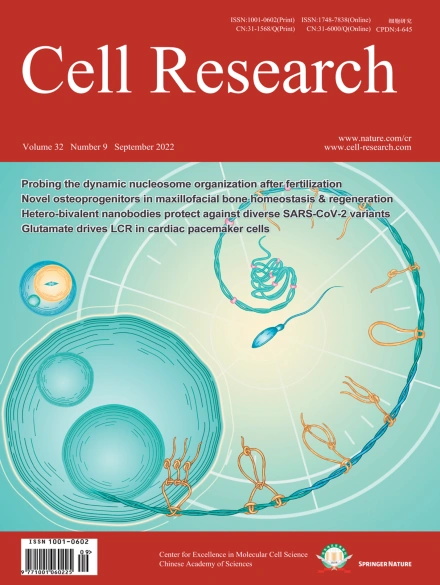
Advanced Search
Submit Manuscript
Advanced Search
Submit Manuscript
Volume 32, No 9, Sep 2022
ISSN: 1001-0602
EISSN: 1748-7838 2018
impact factor 17.848*
(Clarivate Analytics, 2019)
Volume 32 Issue 9, September 2022: 858-861 |
Structural insights into thyrotropin-releasing hormone receptor activation by an endogenous peptide agonist or its orally administered analogue
Fan Yang1,† , Huanhuan Zhang1,† , Xianyu Meng1,† , Yingge Li1 , Yingxin Zhou1 , Shenglong Ling1 , Demeng Sun1 , Pei Lv1 , Lei Liu2,* , Pan Shi1,* , Changlin Tian1,3,*
1The First Affiliated Hospital of USTC, School of Life Sciences, Division of Life Sciences and Medicine, Joint Center for Biological Analytical Chemistry, Anhui Engineering Laboratory of Peptide Drug, Anhui Laboratory of Advanced Photonic Science and Technology, University of Science and Technology of China, Hefei, Anhui, ChinaDear Editor,
Thyrotropin-releasing hormone (TRH) is a tripeptide (L-pyroglutamyl–L-histidinyl–L-prolinamide) that is widely distributed in the brain and spinal cord, playing dual roles as both an endocrine hormone and a neuropeptide. TRH plays a central role in the hypothalamic–pituitary–thyroid (HPT) axis.1,2,3 TRH is mainly synthesized in the hypothalamus and stimulates the release of thyroid-stimulating hormone (TSH, also known as thyrotropin) and prolactin from the anterior lobe of the hypophysis.4,5 TRH activates the class A G protein-coupled receptor (GPCR) thyrotropin-releasing hormone receptor (TRHR), leading to the coupling of Gαq/G11 and the subsequent production of inositol-1,4,5-triphosphate and the release of intracellular Ca2+ ions.6 Outside of the hypothalamus, TRH functions as a neurotransmitter or a neuromodulator2 and exhibits antidepressant activity, arousal, analeptic and neuroprotective effects, cardiovascular and gastrointestinal autonomic functions.2,7 TRH is considered a promising peptide template for the analogue development to treat brain and spinal injuries, or central nervous system (CNS) disorders including epilepsy, schizophrenia, spinal cord trauma, Alzheimer’s disease (AD), Parkinson’s disease (PD) and depression.<a data-track="click" data-track-action="reference anchor" data-track-label="link" data-test="citation-ref" aria-label="Reference 7" title="Khomane, K. S., Meena, C. L., Jain, R., & Bansal, A. K. Expert Opin. Ther. Pat. 21, 1673–1691 (2011)." href="https://www.nature.com/articles/s41422-022-00646-6#ref-CR7" id="ref-link-section-d64744794e513" style="vertical-align: baseline
https://doi.org/10.1038/s41422-022-00646-6